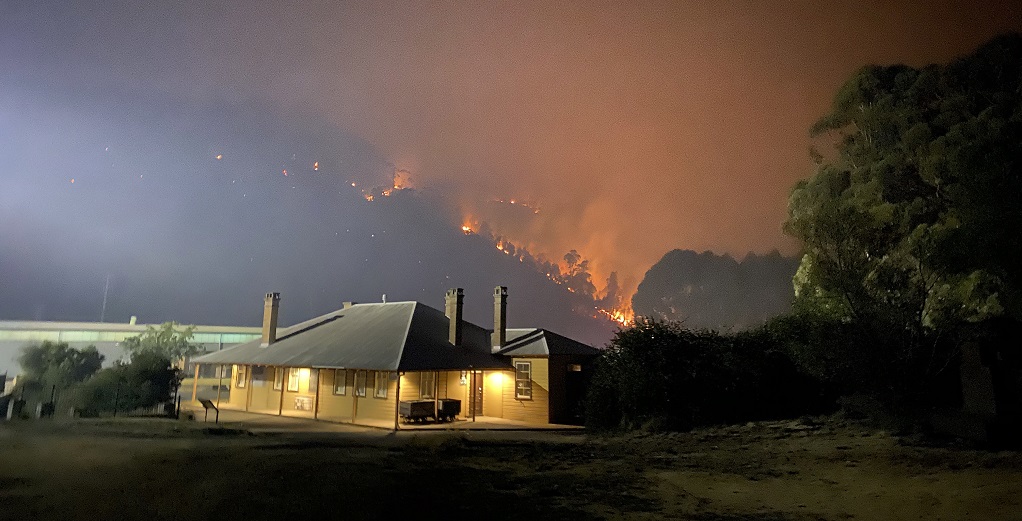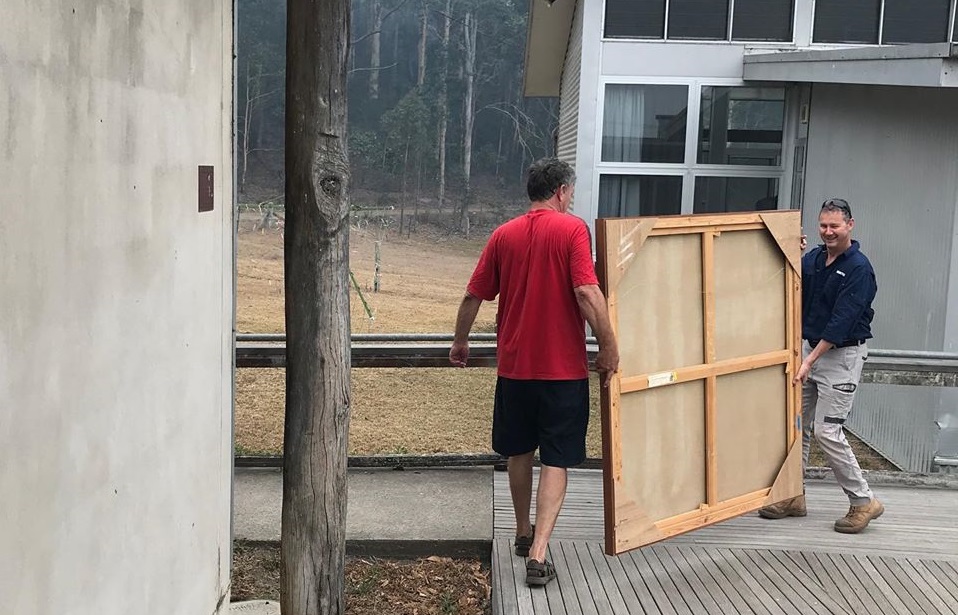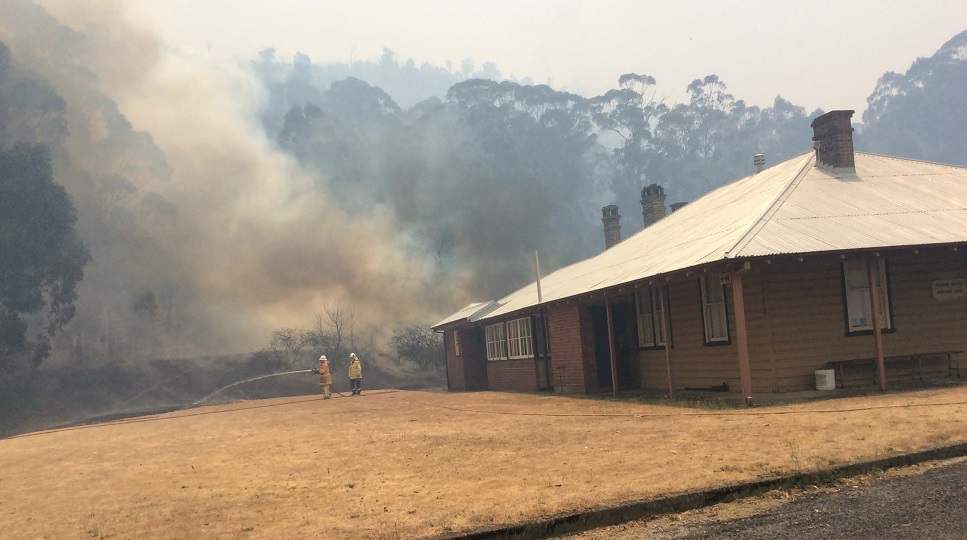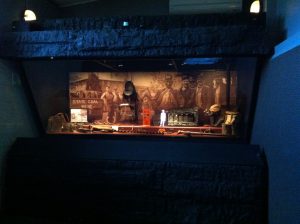During the recent bushfire crisis, many museums and galleries were affected. We spoke with Deborah Ely, from Bundanon Trust, and Ray Christison, from the Lithgow State Mine Heritage Park, about their respective experiences with the bushfires and what they learnt as a result.
Deborah Ely, CEO, Bundanon Trust
Bundanon Trust has always had fire and disaster management plans for the collection which are reviewed regularly. Could you tell us about these and what staff training is involved?
The Trust is guided by a series of disaster management plans which speak to each other. Because we are in a rural setting, our Fire Plan is a very active document, outlining things such Asset Protection Zone maintenance, etc. Flowing from this, we have an Emergency Control Organisation for the evacuation of both sites and a Crisis Management Team to address emerging and actual incidents including flood, fire and other threats (such as bombs, active shooters etc). Strict protocols are in place and all staff are first responders. Training is undertaken regularly with accredited trainers in different areas of disaster awareness and response and there are annual, week-long, scenarios which rehearse staff for emerging situations. There is also a Disaster Plan for the Collection.
What lessons has the organisation learnt from recent experiences that might change policies or practice in the future?
Our current policies and practices were reinforced. Do not be complacent and do not stay and defend. Be cautious and make decisions early. Our regular training, which includes enacting responses to various situations, enabled us to move artworks, at speed, utilising staff in non-arts roles as everyone has had the opportunity to rehearse for such an eventuality.
Given the climatic situation, we may need to consider moving very valuable artworks away from public display during high-risk periods if we don’t feel we can give them 100% protection. Our new gallery and store will address this at Riversdale but Bundanon might need a different strategy.
Was any damage to collection items or property sustained during the recent bushfires?
No obvious damage has been sustained to either the art collection or built assets, however, the landscape has in parts been totally destroyed – but not in the immediate visitor precincts. It is too soon to know if the buildings, rugs and furniture have been negatively impacted by smoke and other detritus.
In 2018, the National Indigenous Fire Workshop was held at Bundanon, as a celebration of cultural fire knowledge and practice. You also have a program of collaborating with local Indigenous people, and the Rural Fire Service, to return ‘cultural burning’ to your toolkit of environmental management techniques. Can you tell us about that program and the impact you believe it may have had on Bundanon’s ability to withstand the recent fires?
We have been working in partnership with the local Aboriginal Firesticks mob to better understand our landscape. They have been practicing cultural burning on the Trust estate for around two years which has had the benefit of removing a significant fuel load off the properties. While it is not primarily a fire prevention strategy, but rather a more complex cultural practice, it nevertheless has afforded us protection against catastrophic fire events on certain parts of Bundanon.
In talking with the local Elder, Noel Webster, we think it is too early to say if this particular incident has been better contained because of their burning. We still need to analyse the fire patterns and its movement across different parts of this very large landscape.
What are your thoughts on the NSW Rural Fire Service contribution and support of Bundanon through this disaster and what advice do you have for other regionally based organisations seeking to develop a relationship with the RFS?
The RFS threw everything at us and were totally heroic in responding to every threat.
It’s easy to talk to your local RFS throughout the year. Don’t leave it until there’s a disaster. Ask them in to talk to your staff and volunteers, invite their members to events, let them get to know your premises and what things are of the highest value, seek their advice about managing your property. And donate to them if you can (we do).
Ray Christison, President, Lithgow State Mine Heritage Park
Similar to Bundanon Trust, The Lithgow State Mine Heritage Park has a large exposure to the Australian Bush. Could you tell us about the disaster planning the organisation has in place and what volunteer training is involved?
The museum has no formal disaster management plan; however, we have a collection management policy, emergency procedure and procedure for use of firefighting appliances. These plans cover management of our collection as well as setting out actions to be taken in the case of an emergency. We also have an undocumented protocol for removal of photographic collections and significant historic documents from the site in case of a bushfire. We will establish a formal procedure for this in the near future. This will be included in a specific procedure for bushfire management. We train volunteers in the deployment and use of all firefighting appliances, including fire hoses. We have not conducted formal training for some time but carry out informal training as part of site inductions.
What lessons has the organisation learnt from recent experiences that might affect those policies and practices into the future?
We have experienced three major bushfire events in the past 23 years. We had advance warning of two of these fires, including the recent Gospers Mountain Fire. We know the principal risk points and have determined, in light of experiences with this fire, to undertake substantial tree removal within our boundary fences and to conduct more working bees to keep leaf build-up to a minimum. These actions will be formalised into a bushfire management procedure.
Was any damage to property or collection items sustained?
The Gospers Mountain Fire impacted our site on 20 and 21 December 2019. By our preparations and the actions of our volunteers, the main buildings and collection were undamaged. We sustained almost $10,000 worth of glass damage to windows along the western side of our large workshops building. Two timber retaining walls in a bushland picnic area were destroyed by a burn that started on 20 December. On 21 December a firestorm destroyed a timber post and rail fence near our entry. Between 22 December and 14 January, we have had a number of underground fires in areas of dumped coal waste located on the site. Control of these fires has resulted in damage to the archaeological remains of a former coal loading bank and a former horse stables. A creek line within our site has also been disturbed by these works. We have also been required to cut down large trees made dangerous by the fire. We are currently seeking quotes for the reconstruction of damaged infrastructure and environmental remediation and are hoping to apply for disaster recovery funding to undertake these works.
The firefighters deserve a special mention, what advice do you have for other regionally based organisations seeking to develop a relationship with Fire and Rescue NSW or the RFS?
Our museum is located within the town limits of Lithgow and fire control normally comes under the responsibility of Fire and Rescue NSW. We maintain a positive relationship with all emergency services, including the RFS and SES. We are also fortunate to have our own firefighting standpoint and ensure this is deployed and active during every bushfire. It is valuable for fire tankers seeking to refill without having to withdraw from the fire front.
During the current bushfires, we were assisted in the following ways. Prior to the arrival of the fire, the RFS arranged scrapes for firebreaks within our boundary fence. These helped stop the spread of fire on 20 and 21 December. On 20 December Fire and Rescue NSW attended our site to monitor fire activity and replenish water at our standpoint. On 21 December our volunteers were supported in firefighting by the Rocky Forest No.7 RFS unit. This group and their tanker provided invaluable assistance in preventing a firestorm from impacting our main building, the former Lithgow State Coal Mine Office. They were required to withdraw to protect houses in the town but returned when this crisis had been overcome. We will be eternally grateful to them. After the main fire, local RFS and Fire and Rescue NSW units have patrolled our site and subdued coal waste fires when called upon. The SES has also felled large damaged trees for us.
In my view, it is important to maintain a dialogue with all emergency services. We have provided our site as a training place for all services and ensured that local units know our buildings and firefighting infrastructure. We are grateful that all emergency service personnel value our museum as a very valuable cultural heritage, community and tourism facility. Regional people generally volunteer in more than one context and part of our engagement strategy is to make our site and buildings available to a wide range of community organisations. This ensures that a broad section of our region’s population holds our museum in very high regard. We have broadened this approach further by partnering with local native animal welfare groups. We are now acting as a depot for the storage of feed brought into our district to succour native animals. We have also maintained our own programme of providing water and feed for kangaroos, possums and other animals on our site.
Read more:
Picasso, Arthur Boyd, Sid Nolan art relocated to Sydney from Bundanon to avoid future bushfire threat
Bringing the good fire to Bundanon
Gospers Mountain bushfire destroys Zig Zag Railway buildings, infrastructure









